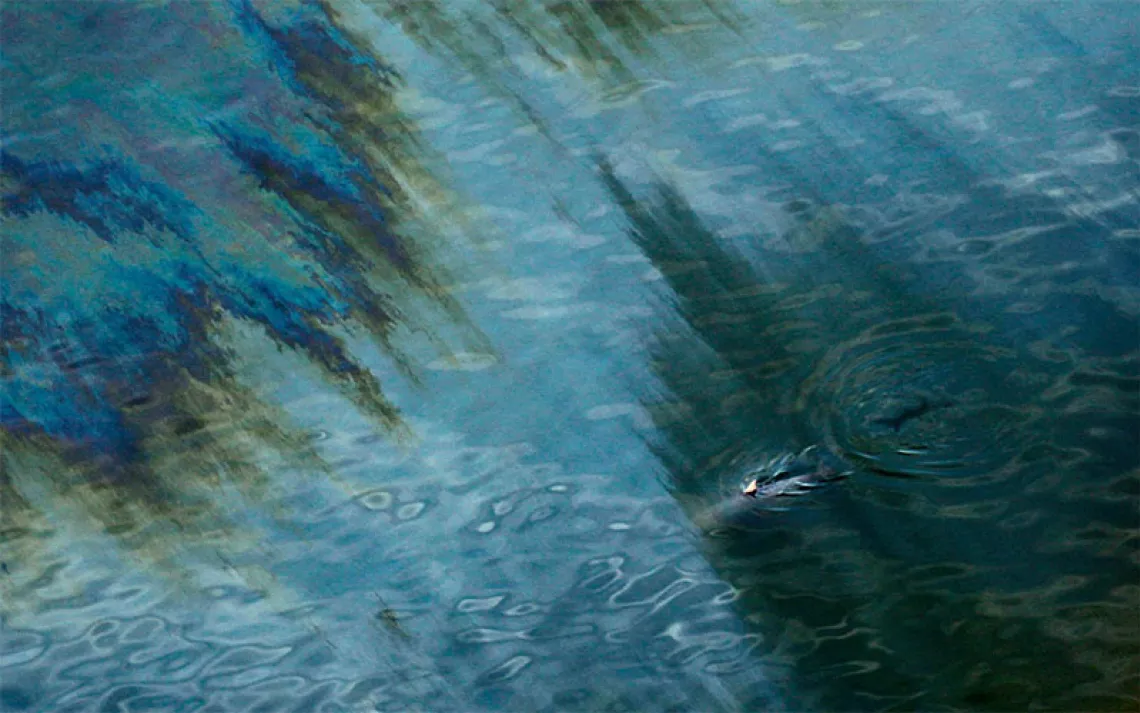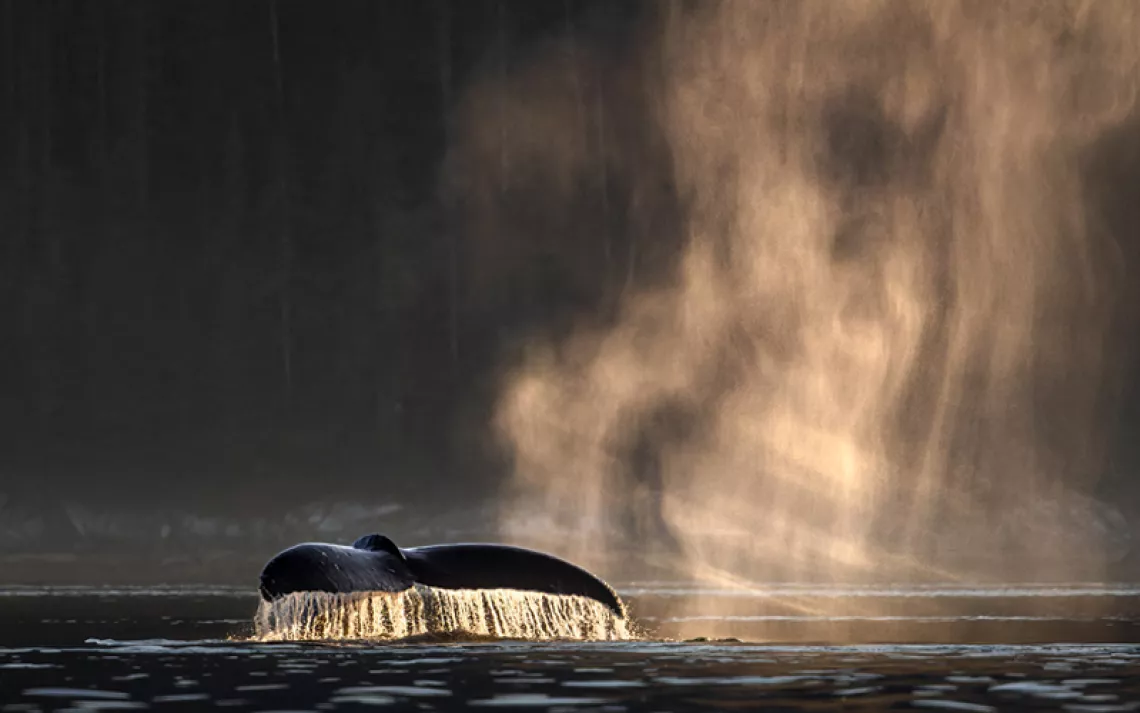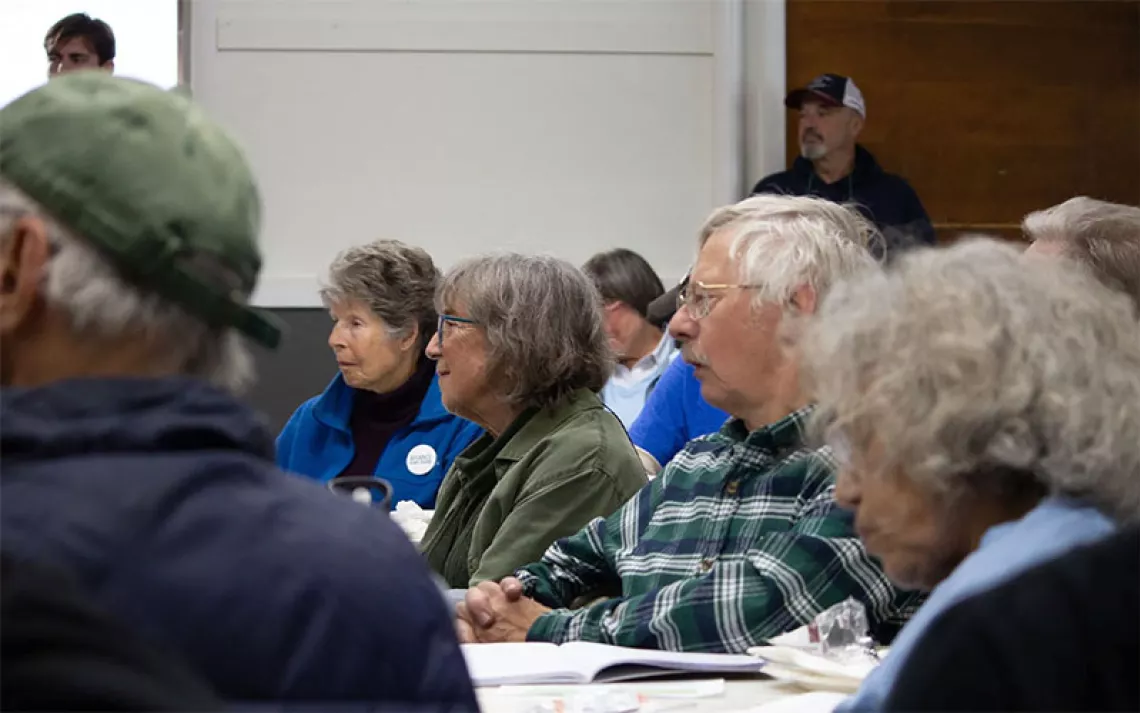Divers Clean Up the Largest US Marine Conservation Area—By Hand
In just one mission, divers removed 126,310 pounds of debris from Hawai'i's Papahānaumokuākea
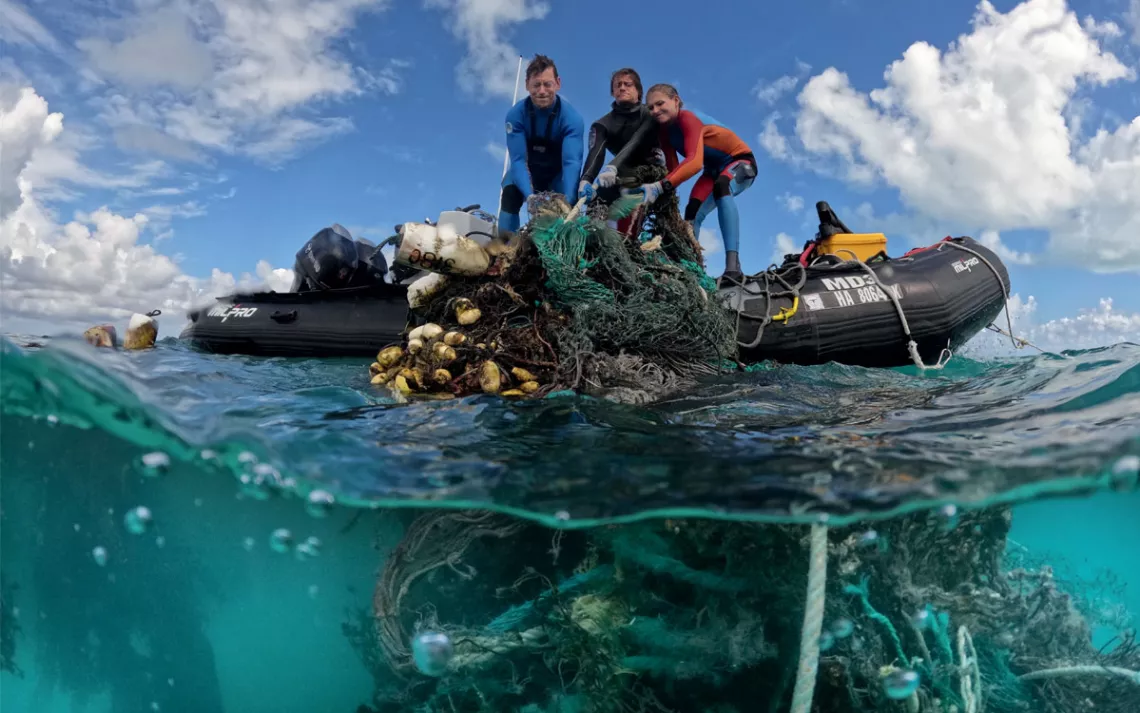
Kevin O'Brien and two others pull a huge tangled net out of the ocean into a dinghy. | Photo by Andrew Sullivan-Haskins/PMDP
Roughly 1,300 miles northwest of Honolulu, the knowable world gives way to a realm of gods and ancestral spirits. In Native Hawaiian cosmology, it's here, along the Tropic of Cancer, where Pō, the dark domain of mystery, meets Ao, the familiar, light-drenched land of living things.
This sacred boundary, the wellspring of life and where spirits return in death, lies within Papahānaumokuākea, a vast area in the middle of what Herman Melville called the "tide-beating heart of the earth"—the Pacific Ocean. In 2006, Papahānaumokuākea became a marine national monument and one of the world's largest protected areas.
Papahānaumokuākea's 583,000 square miles contain open ocean, more than a dozen islands, and numerous atolls and lagoons. The area is home to more than 7,000 species, 23 of them endangered. Ninety percent of Hawai'i's green sea turtles and 80 percent of its monk seals as well as 14 million seabirds reside here, in one of the planet's most intact marine ecosystems.
"And then, wham, it hits you in the face, how incredibly polluted this place is," Kevin O'Brien says. In 2019, O'Brien founded the Papahānaumokuākea Marine Debris Project, a nonprofit with just two full-time staff members and a mission to remove trash from an area bigger than Texas, California, and Montana combined.
A seasonal team, usually 18 people, embarks on a 180-foot charter vessel for weeks at a time between May and October, when project-halting swells are less likely. Pairs of divers set out in smaller boats to deftly cut abandoned fishing nets from coral. They free dive—using controlled breathing rather than scuba gear because they frequently bounce up to the surface and tend to work in shallow areas. This intense physical labor is "helping our reefs breathe," says Kanoe Morishige, a Native Hawaiian specialist for the National Oceanic and Atmospheric Administration (NOAA) who is familiar with, but not directly involved in, the debris project.
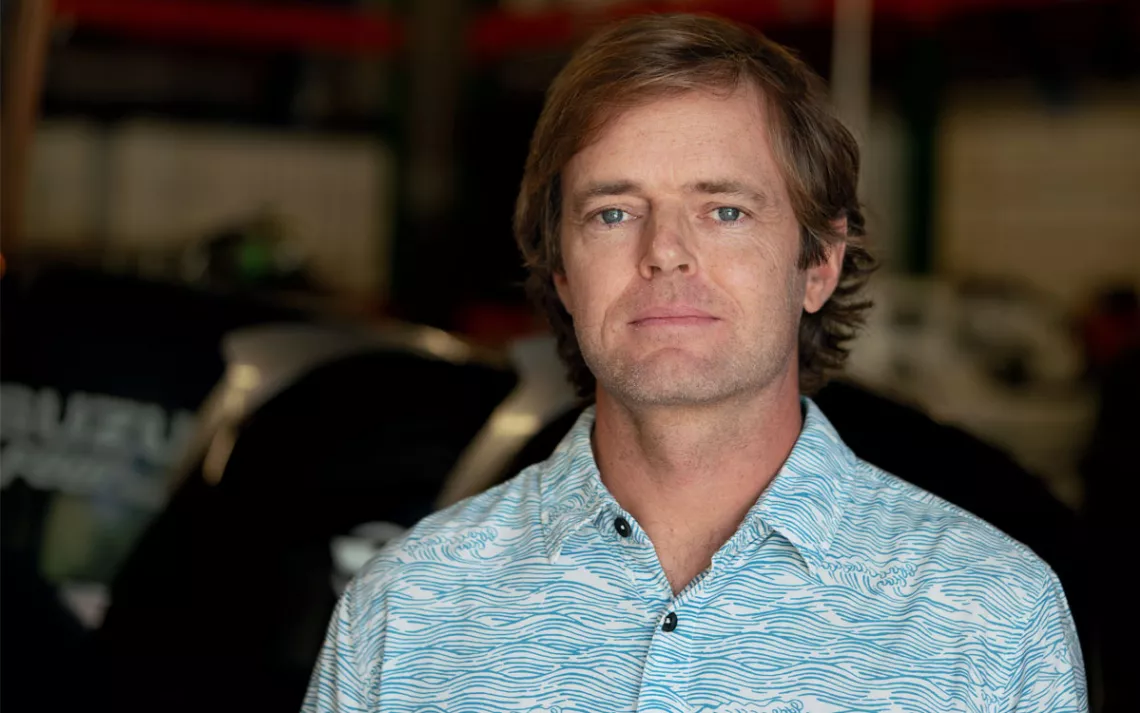
Kevin O'Brien is the leader of a team of divers cleaning up the Pacific. | Photo by Andrew Sullivan-Haskins/PMDP
No recreational or commercial fishing is allowed within the protected area, but Papahānaumokuākea's lagoons, often bounded by barrier reefs, make perfect traps for ghost nets and garbage from all across the Pacific. In their second mission of 2023, the divers removed 126,310 pounds of debris by hand. On a single day, they freed seven sea turtles from nets, a bittersweet triumph that underscored the extent of the devastation. They often find only bones.
"If you can think of it and it's made of plastic and it floats," O'Brien says, "we've found it." The crew has retrieved car bumpers, surfboards, floating docks, bowling balls, and sex toys. But most of the debris is from the fishing industry.
A recent Pew Charitable Trusts report called illegal, unreported, and unregulated fishing "one of the biggest threats to global ocean sustainability." With little legal oversight and a community of nations unwilling to intervene, the oceans are a free-for-all. Bottom trawlers bigger than football fields raze the seafloor, their nets large enough to hold a Boeing 747.
The $40 billion tuna industry relies heavily on fish-aggregation devices, which are legal. These devices are sometimes simple: PVC or bamboo rafts trail up to 230 feet of net, which entangles small sea life and attracts bigger predators. Tracking buoys beckon fishers, who harvest the bounty at their leisure. When the nets float out of fishing grounds or are no longer useful, fishers simply turn off the tracking and let them go. As many as 65,000 of these aggregation devices drift across the Pacific.
O'Brien visited Papahānaumokuākea Marine National Monument for the first time in 2007. "It's a place of legend," he says. "No one really gets to go there unless you somehow find your way onto one of these scientific projects." But O'Brien had managed: The Montana native had landed a job with NOAA soon after he graduated from the University of Hawai'i.
O'Brien's NOAA division was responsible for monitoring coral reefs in the United States' Pacific territories, a mandate that included cleanups at Papahānaumokuākea. It was one of O'Brien's favorite parts of the job because the results were tangible. Research trips yielded abstract data, whereas the cleanups produced heaps of derelict nets and junk from across the Pacific. Unlike ocean acidification and coral bleaching, the pollution was a problem O'Brien could do something about, "like, today."
Over O'Brien's 12 years at NOAA, however, funding ebbed. In 2018, the agency ran its last marine debris cleanup at Papahānaumokuākea. The next year, O'Brien "maybe foolishly" left to start his own organization.
The Papahānaumokuākea Marine Debris Project ran its first few cleanups in full partnership with NOAA, but since 2022 has led the work itself, at a cost of $30,000 per day at sea, funded through grants and contributions from government agencies, including NOAA.
Papahānaumokuākea "is a sacred biocultural seascape, not just an oceanscape," Morishige says, and it's clear to her that O'Brien and his staff understand its cultural significance. The debris project abides by a Hawaiian proverb: He ali'i ka 'āina; he kauwā ke kanaka. The land is chief; man is the servant. On its fall mission, the team, which included Native Hawaiians, made tī leaf ho'okupu, a traditional offering, and chanted to commemorate its crossing into Pō.
The staff's adept use of social media also introduces the monument to thousands of people who will never see it. "They bring these images home to our communities," Morishige says, so we can "better understand places where humans don't live and reflect on what we need to do in order to take care of the places where we do live."
 The Magazine of The Sierra Club
The Magazine of The Sierra Club

